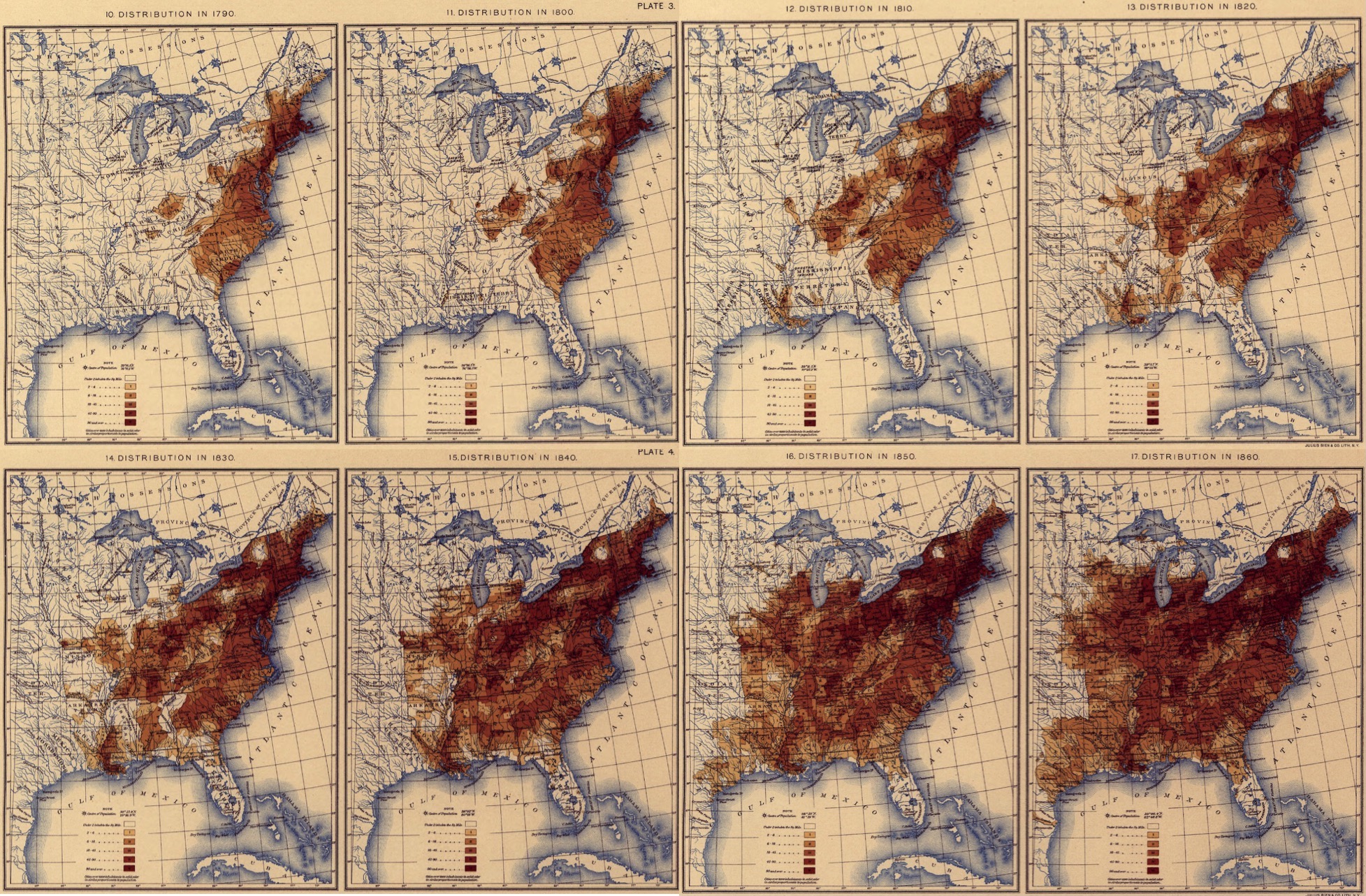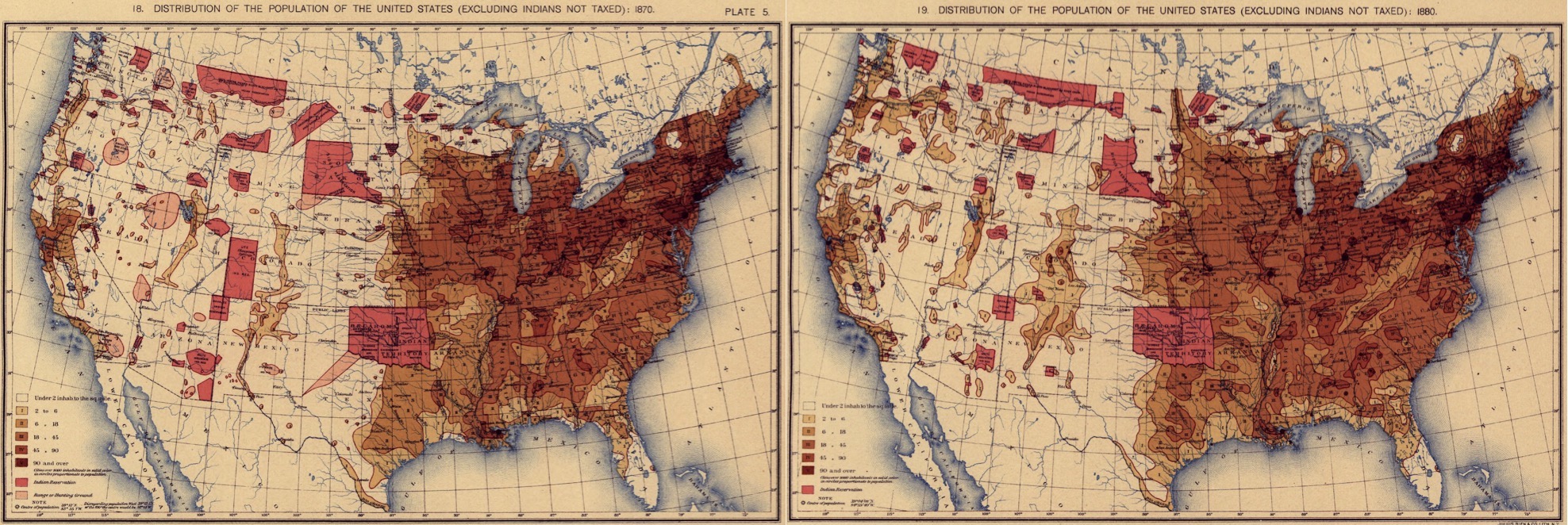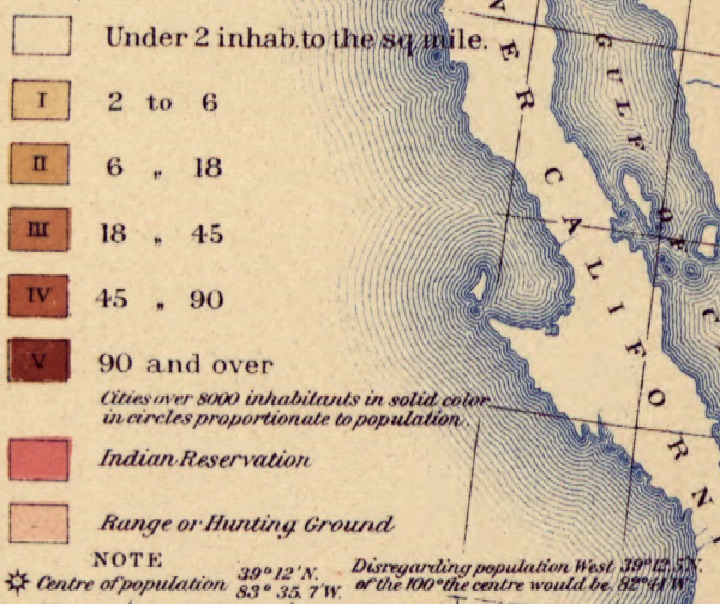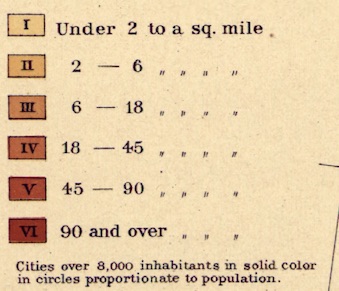How the west was really won: by manipulative data visualization
One of most well-known historical theories about America is the “frontier thesis,” advanced by Frederick Jackson Turner in 1893. It states that the long existence of a “frontier,” a zone between the settled and unsettled regions of the United States, is responsible for distinctive aspects of the American character: independence, self-reliance, egalitarianism, a certain disdain for high culture and learning, etc. The United States was, at independence, a fairly narrow strip of land east of the Mississippi, but the frontier was pushed continually west until eventually it reached the Pacific and vanished altogether.
You can see this movement on a sequence of population density maps, based on decennial census results, published in the 1898 Statistical atlas of the United States. Here’s the 1790 to 1860, when they didn’t even both showing the west:

And here’s 1870 and 1880, with growing western settlement. (Note “EXCLUDING INDIANS NOT TAXED”, a constitutional phrase that affects how you should view these maps.)

Turner’s key premise, his motivation for the rest of the essay, is that, as of 1890, the frontier has been closed. He begins:
In a recent bulletin of the Superintendent of the Census for 1890 appear these significant words: "Up to and including 1880 the country had a frontier of settlement, but at present the unsettled area has been so broken into by isolated bodies of settlement that there can hardly be said to be a frontier line. In the discussion of its extent, its westward movement, etc., it can not, therefore, any longer have a place in the census reports." This brief official statement marks the closing of a great historic movement.
But was this actually correct? Far be it from me to question the words of the Superintendent of the Census of 1890, but I think he might have jumped the gun. Here’s the 1890 density map:

It sure looks like the frontier has been closed, a continuous marbling of brown from coast to coast. But look closer. Here’s the legend used on all the maps from 1790 to 1880:

And here’s the slightly different legend used only for 1890:

See how all the shades have now shifted up one? Where “Under 2 to a sq. mile” was previously unshaded, it is beige (roman I) for 1890. The cartographer has adjusted the color scale to make it look like the US is more settled than it really is.
Now, I don’t want to make more of this than it is. Turner was writing in 1893, before the Atlas and likely any proper maps had been published, so this didn’t influence him. The quote from the Superintendent that did is carefully phrased—”the unsettled area has been so broken into by isolated bodies of settlement that there can hardly be said to be a frontier line” (my emphasis). Clearly what exactly constitutes “closed” is a matter of judgment.
Still, I can’t help but think that Henry Gannett, the US census geographer, has intentionally manipulated the color scales here to reinforce the frontier claim, which by 1898 was well known, probably in large part thanks to Turner’s frontier thesis. It must have been very tempting all round to agree that America was essentially finished by 1890, exactly 100 years after the first census. And if you mapped 1890 on the same color scale as 1880 and earlier, with large areas unshaded, it might not look that way.
What’s a little graphical sleight-of-hand if it helps unify a nation?
The full atlas is a beautiful thing to behold, and has been inspiring in my own work. I once had a chance to page through a printed copy in the Smithsonian, and while it’s best as a physical object (it’s huge, and heavy, and conveys seriousness and accuracy), you can view high-res scans thanks to the Library of Congress, here.
Add comment
Comments are moderated and will not appear immediately.
Comments (1)
An interesting postscript to this: in the 1910 statistical atlas, page 19 of the link below, this error has been corrected. https://fraser.stlouisfed.org/files/docs/publications/stat1914/STAT_AT1914_Population.pdf